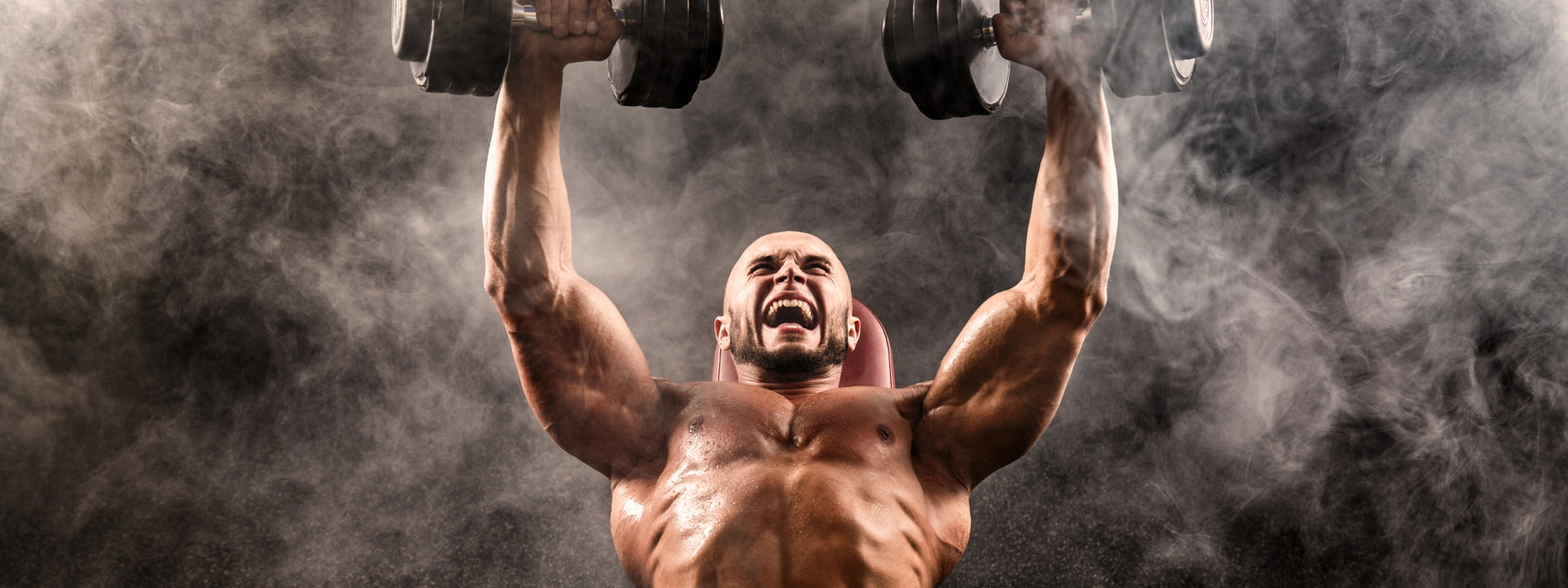
Incline Dumbbell Press - A Quick Guide
Building a big chest means you need to develop your pecs. That means you need to properly overload your chest with exercises that can hit all angles.
Incline dumbbell presses are an exercise every lifter needs in their pocket. By adjusting our angle we lay, we can target our upper pecs that other exercises can't match. When we lift our arms over our head, the clavicular portion of our pec is shortened. This means a larger incline will stress the head of your pec and deltoids.
It shouldn't be a secret that an incline bench will be a little weaker than a flat bench, but it's a highly-effective exercise nonetheless.
Incline Dumbbell Press
Getting the Right Angle
Choosing the right angle for your incline can be tricky. Ideally, set your bench to around 15 to 30 degrees — this is generally the first or second setting on an incline bench.
Many lifters swear by a 45-degree angle, but many professionals suggest this could risk hitting the wrong muscles. Since we don't have a protractor in our gym bag, finding 45 degrees and trying the incline settings before you get to flat all will work.
Angling too high will target your shoulders, ultimately turning it into an overhead press. So mess around with the bench and find what feels best for you. You should feel the stress in your upper pec and slightly in your shoulders — if there's more strain in your shoulders, drop the incline a little.
Using the Incline Dumbbell Bench in Your Workout
The incline dumbbell bench is a compound movement that targets the clavicular head of your pec. Anterior deltoid and triceps brachii act as the supporting muscles of this group.
When properly performed, incline benching will include no significant involvement of the sternal head of your pec.
Adding these into your current chest routine could significantly improve your chest definition and increase your flat barbell bench press.
Performing the Incline Dumbbell Press
Set your bench to your chosen height — you don't need to measure the angle, but somewhere in the middle of flat and fully upright is where you want it set.
I personally recommend starting at the first setting, trying the next, etc. There's going to be a sweet spot and that can vary between lifters.
If you have a 225-pound barbell bench, this doesn't translate to the same incline... especially using dumbbells. Select two dumbbells that are equal in weight. Uneven loading won't improve gains and will likely lead to an injury.
If you're new to this exercise, pick a conservative weight and learn the form.
Sit down on the bench and in a controlled motion lean back and lift the dumbbells off of your thighs. Raise your arms so that your dumbbells move upwards in line with your shoulders.
Keep your chest high, squeeze your shoulders together, and lower the dumbbells. Pause for one to three seconds and press.
You can use different training protocols with incline dumbbell bench press — straight sets, pre-exhaust sets, drop sets, rest-pause, paused reps, partials, and slow negatives.
Incline Dumbbell Press Form Tips
This exercise isn't terribly complicated, but here are some tips to help you get the most out of this chest exercise.
Don't Be Afraid to Pause at the Bottom
Pausing at the bottom, even for a slight second, can increase your workout intensity. This isn't time to let your muscles relax, so maintain a tight posture and keep the weight stressing your pecs.
Increased time under tension is an excellent way to adjust for some progressive overload and building muscle.
Stay Tight the Whole Lift
A common mistake I see lifters make is they lose tightness while they lower the dumbbells. This is why a proper setup is important to staying tight.
Brace your core, keep your chest high, and keep shoulders tight and glued to the bench to avoid the risk of injury.
Leave Your Ego at the Door
When performed in a controlled full-range of motion, the dumbbell incline bench is a great exercise. Checking your ego at the door to keep you from attempting those 100-pound dumbbells will help with growth.
With that being said, you should refrain from "bouncing" the weights back up. Utilizing this spring effect decreases the stimulus on the targeted muscle and increases the chances of an injury.
Be Easy on the Dumbbells
Slamming the dumbbells against each other every rep makes for an easy way to count, but when they bounce off of each other this can create issues. This bouncing generates momentum which can start to minimize the engagement of the intended muscle groups.
Dumbbells are expensive, so dropping them or otherwise not taking care of them is frowned upon. Use dumbbells to beat your muscles up, don't beat the dumbbells up.
And put them away when you're done.
Use Full Range of Motion
Using a full range of motion on an exercise puts maximum stimulus and time under tension on your muscles.
Lower your weight in a controlled manner until you reach a comfortable depth, press back up, repeat.
Sample Chest Workout
Ready to try some incline pressing?
- Flat Barbell Bench Press - 3 sets of 8-12 reps
- Incline Dumbbell Bench Press - 3 sets of 10 reps
- Incline Chest Flys - 2 sets of 15 reps
- Pec Deck - 3 sets of 12 reps
- Machine Bench Press - 2 sets to burnout
